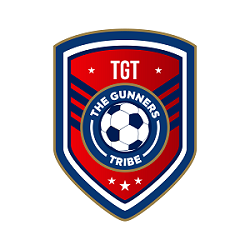[THE ATHLETIC] – The making of Cagigao, the man who found Fabregas, Martinelli, and Bellerin : Gunners
Sorry if this was posted already, I didn’t see it, but a really interesting read on one of the longest tenured scouts in the Arsenal system. Some gems I really enjoyed from the article that those without access may not have (it’s going to look like I’m basically posting the whole damn thing, but I assure you this one is long as hell, and mods if I have to edit it a bit to keep it up, just let me know, I’ll reword the paragraphs, but I thought it was an interesting read):
Fabregas is his most frequently-cited success story. Cagigao first saw him play as a 15-year-old in the MIC tournament in Lloret de Mar. The talent was immediately obvious but Cagigao did his homework on other aspects of his game: his character, his background, his lifestyle.
The Fabregas signing was part of a concerted drive to acquire young European players at low cost. Arsenal had a stadium to build and a loophole in Spanish football regulations meant players could be acquired before the age at 16 for negligible compensation fees. Barcelona proved a happy hunting ground for Arsenal — at the time, the Catalan club were reluctant to hand out big contracts to academy players and Arsenal seized the advantage. Spanish clubs typically have bigger academies, so talent can sometimes slip through the cracks. What’s more, at that point, Wenger’s Arsenal were the closest stylistic match to Barcelona in England. A player made at La Masia could feel quite at home at London Colney.
They tried for more: four months before he agreed a deal with Manchester United, Gerard Pique had been in advanced talks with Arsenal. It’s one of the great regrets of Wenger and Cagigao’s careers that work-permit regulations extinguished a possible move for Lionel Messi.
Cagigao spotted Bellerin playing as a right winger in Barcelona’s under-16 side. Impressed by his athleticism and intelligence, Cagigao was convinced of his potential as a right-back. The pitch to Bellerin’s family was simple: come to Arsenal and develop into an international class full-back or stay here and settle in for a life as a second-division winger.
Cagigao had identified Lauren as a potential successor to Lee Dixon while he was playing in midfield for Mallorca. Cagigao convinced Wenger and Rice that Lauren would be a right-back but The Athletic understands that, after his first few training sessions, the coaches were far from convinced. Lauren started his Arsenal career in midfield but in typical fashion, Cagigao stood firm: if he was played at right-back, he would flourish. A few months later, Lauren made the transition — and Cagigao received a grateful phone-call from Wenger: “You were right. He’s a right-back.”
Santi Cazorla did not arrive at Arsenal until he was 27. By that point, Cagigao had been tracking him for more than a decade. He filed reports on Cazorla’s outstanding technical ability when he was just a 16-year-old with Real Oviedo, offering the caveat that he needed to develop a little physically before moving to England. When Arsenal lost Fabregas and Samir Nasri in the summer of 2011, Cagigao and the scouting department recommended buying Cazorla and Juan Mata to replace them. A few months later, the club also signed Nacho Monreal from the same club. He, too, was the subject of long-term interest. On Cagigao’s recommendation, Arenal had previously made offers for both Monreal and Cesar Azpilicueta when the pair were with Osasuna in the Spanish second division.
Arsenal’s interest in Pierre-Emerick Aubameyang, meanwhile, dates back to when he was just 21 years old. When he began to blossom at Saint-Etienne, there was a clear recommendation from the scouting department to sign the player. Arsenal felt they were sufficiently well-stocked for strikers at the time and passed.
Wenger was open to using analytics as another tool for recruitment, particularly after Arsenal’s acquisition of Stat DNA, and this led to a degree of tension between scouting and stats. One such case was Shkodran Mustafi. When Arsenal were on the hunt for a new centre-half in the summer of 2016, the German did not figure on the scouting department’s list of recommendations. The statistics made a compelling case for the player and the scouting reports were overruled.
In the same summer, Arsenal signed Lucas Perez from Deportivo de La Coruna. The club had intended to buy Jamie Vardy, triggering his release clause before the striker decided to remain at Leicester. Perez was on the brink of a move to Everton when an agent working on the deal asked Cagigao whether he’d considered him an option for Arsenal. “Not a chance,” was Cagigao’s response. “He’s a mid-table player.” (brutal lmfao)
When Arsenal sent Carlos Vela on loan to Spain, Cagigao was dispatched to keep track of his development. Vela was stationed at Celta Vigo, just a couple of hours drive from Cagigao’s base in Galicia. After a few months observing him, his analysis was emphatic: “100 per cent of the talent, 0 per cent of the attitude.” There is that intuition, that feel for football. If stats provide the science, Cagigao helps keep alive the artistry of talent-spotting.
It was Cagigao’s lead scout in Brazil, Everton Gushiken, who first brought Martinelli to his attention. There was enough that was intriguing about this player to overlook the fact he was currently with fourth-division Ituano. He had previously been on the books at Corinthians, scoring 73 goals in 139 games. Cagigao convinced Sanllehi to negotiate an exclusivity option, granting Arsenal a four-week window after the player’s 18th birthday in which only they would be able to negotiate a permanent transfer. The final stage was a face-to-face meeting between Cagigao, the player and his father. Cagigao saw what Vela had lacked: humility, determination, ambition. His mind was made up.
As the head of the team, Cagigao’s role now involves a bit more paperwork but he still takes a hands-on approach to talent identification. In a normal week, he will attend between three and five games. Where possible, he will even watch training sessions, as well as undertaking the obligatory background checks. When the business of football gets going again, Cagigao will make his voice heard to Arsenal’s transfer committee. Sanllehi’s charm might be what gets a deal over the line but it’s Cagigao’s eye that puts it on Arsenal’s agenda — and his persistent voice that ensures it’s executed.




